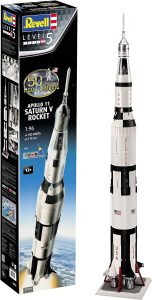Get ready to blast off into the world of model rocketry! Building your own model rockets is an exciting hobby that combines science, technology, engineering, and math (STEM) skills with creativity and fun. Whether you're a seasoned enthusiast or just starting out, this comprehensive guide will walk you through the process of designing, building, and launching your very own model rockets.
Quick Links to Useful Sections
What You'll Need to Get Started
Before you begin, make sure you have the following essential materials and tools:
- Balsa wood or plastic model rocket kit
- Glue and adhesive
- Paint and varnish
- Electronics (motor, igniter, and recovery system)
- launch pad and safety equipment
Additionally, you'll need a well-ventilated workspace, a hobby knife, and some patience and dedication.
Designing Your model rocket
The design phase is where the magic happens. You'll need to consider factors like aerodynamics, stability, and weight distribution to ensure your rocket flies smoothly and efficiently.
Here are some key design elements to keep in mind:
Looking For The Best Model Rocket Kits? You'll Love These:
- Nose cone shape and size
- Fins and stabilizers
- Body tube diameter and length
- Recovery system type and deployment
You can use software like OpenRocket or RockSim to help you design and simulate your model rocket's performance.
Building Your Model Rocket
Now it's time to bring your design to life. Follow these steps to assemble your model rocket:
- Cut and shape the balsa wood or plastic body tubes
- Assemble the fins and stabilizers
- Install the electronics and recovery system
- Glue and secure all components
- Apply paint and varnish to protect and decorate your rocket
Remember to work carefully and methodically to ensure a sturdy and reliable build.
Launching Your Model Rocket
The moment of truth has arrived! Make sure you have a safe and suitable launch site, and follow these steps to launch your model rocket:
- Assemble the launch pad and safety equipment
- Insert the motor and igniter
- Conduct a pre-launch safety check
- Launch the rocket and track its flight
- Recover the rocket and analyze its performance
Always follow safety guidelines and best practices to avoid accidents and injuries.
Tips and Tricks for Model Rocketry Success
Here are some expert tips to help you improve your model rocketry skills:
- Use high-quality materials and components
- Test and refine your design through simulation and experimentation
- Pay attention to weight distribution and balance
- Practice safety protocols and emergency procedures
- Join a model rocketry community or club for support and resources
Remember, model rocketry is a hobby that requires patience, persistence, and practice.
Resources and Community Support: Your Next Steps
Want to learn more and connect with other model rocketry enthusiasts? Check out these resources:
- National Association of Rocketry (NAR)
- Model Rocketry subreddit
- Local model rocketry clubs and meetups
- Online forums and tutorials
Stay inspired, stay curious, and keep reaching for the stars!
Frequently Asked Questions: Model Rocketry 101
Here are some common questions and answers to get you started:
1. What is the best type of model rocket motor?
The best motor for you will depend on your skill level, budget, and rocket design. Research and experiment with different types to find what works best for you.
2. How do I ensure a safe and successful launch?
Always follow safety guidelines, conduct pre-launch checks, and launch in a safe and open area.
3. What is the most important aspect of model rocket design?
Stability and weight distribution are crucial for a successful flight.
4. Can I build a model rocket with my kids?
Absolutely! Model rocketry is a great way to spend quality time with family and teach STEM skills.
5. How do I track and analyze my model rocket's performance?
Use data loggers, GPS trackers, and software like OpenRocket to monitor and improve your rocket's performance.
Looking For The Best Model Rocket Kits? You'll Love These:
Useful Interruption: Dive deeper into the world of Model Rockets with our most popular sections. If there is anything you think is missing or anything you would love for us to write about, just give us a shout.
- Getting Started & Basics With Model Rockets
- Model Rocket Design, Build & Customization
- Model Rocket Propulsion & Engine Technology
- Model Rocket Launch Techniques & Recovery
- Model Rocket Advanced Rocketry & Innovations
- Model Rocket DIY and Customization
- Model Rocket Equipment Reviews & Digital Tools
- Community, Competitions & Education
- Model Rocket Troubleshooting & FAQs
- Model Rocket Bonus/Seasonal & Niche Topics
A group of model rocket enthusiasts gathered at a field for their weekly launch event. Among them was Dave, a seasoned builder known for pushing the limits of hobby rocketry. This time, he had outdone himself.
“Ladies and gentlemen,” Dave announced, dramatically pulling a cloth off his latest creation, “I present to you: The Kraken!”
The crowd gasped. This wasn’t just a model rocket, it was a monster. The thing stood 8 feet tall, had six clustered engines, and was covered in enough duct tape to qualify as a classified aerospace project.
“Dave,” muttered Steve, the cautious safety officer, “Have you, uh… done the math on this?”
“Math?” Dave scoffed. “I built it in my garage at 3 a.m. with parts from eBay. This is an art piece, Steve.”
The countdown began.
5…
4…
3…
2…
1…
The engines ignited with a BOOM, and The Kraken shot up… kind of. It immediately did a violent barrel roll, narrowly missing the spectators before skyrocketing at an angle that could only be described as “legally questionable.”
The crowd collectively ducked as The Kraken flew straight over the adjacent cornfield, where Old Man Jenkins, the grumpiest farmer in town, was minding his business.
KABOOM!
The rocket disappeared behind the barn. A moment later, a flaming piece of Estes igniter wire landed at Steve’s feet. The silence was deafening.
And then, an unmistakable sound echoed across the field.
Jenkins’ shotgun being cocked.
“DAVE!!!” Steve shouted. “RUN.”
And that was the day Dave invented the first-ever biologically powered rocket booster: pure adrenaline.
To this day, nobody knows where The Kraken landed, but legend has it, it still haunts the skies, terrifying unsuspecting drones and low-flying birds.















